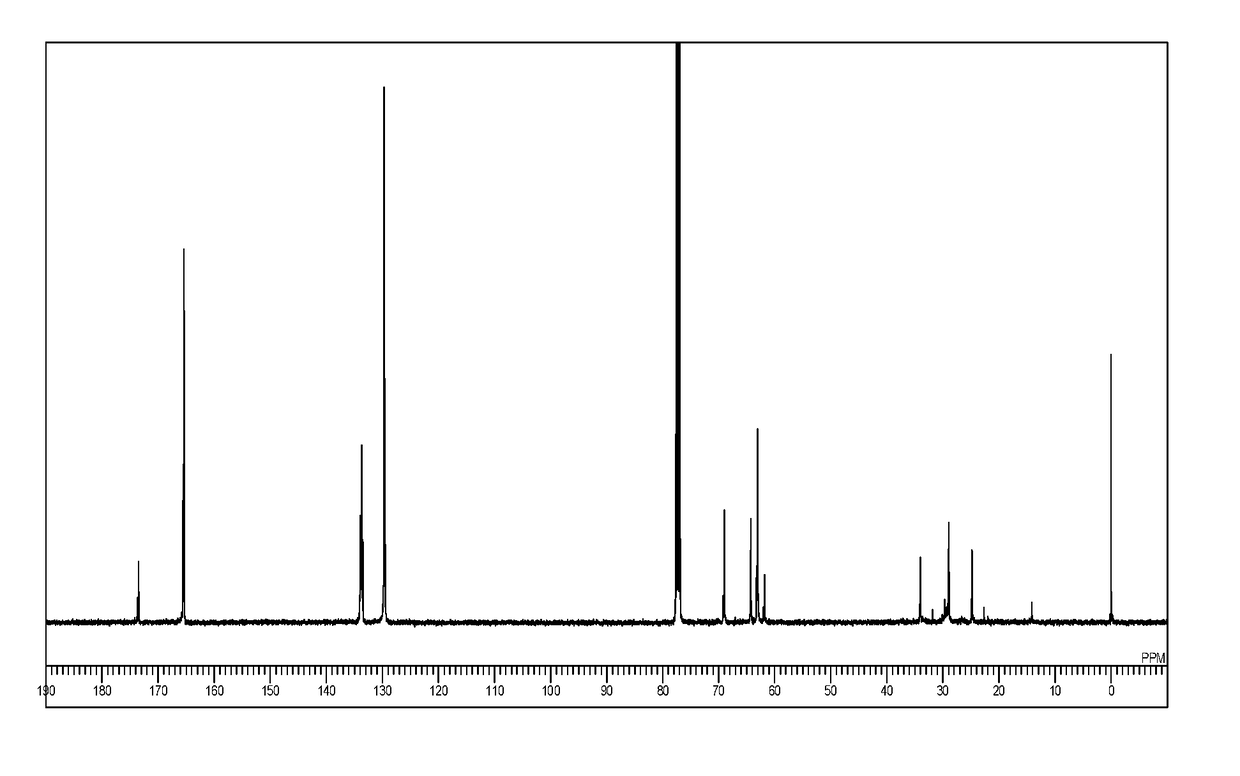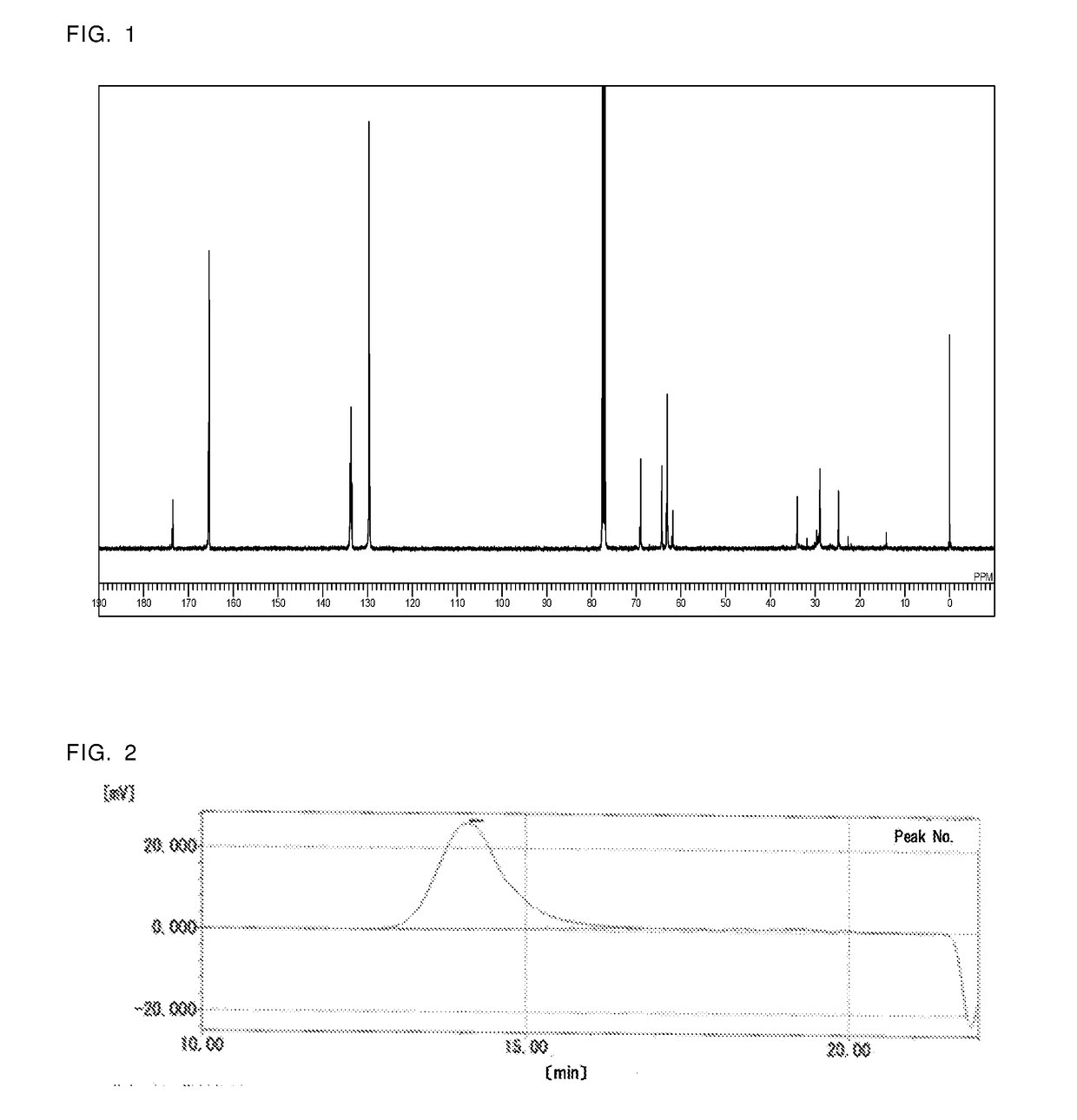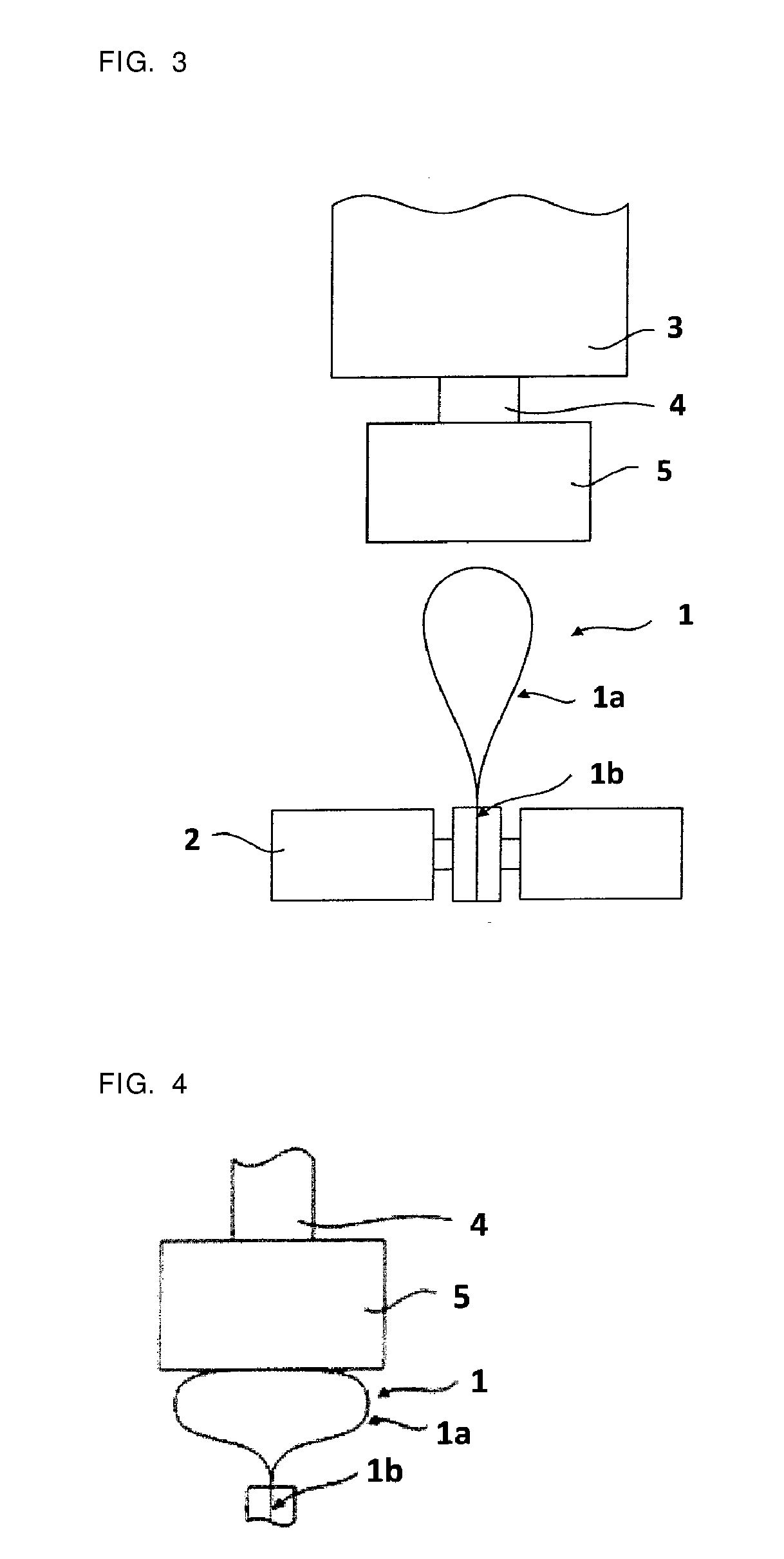Polyester resin, method for producing polyester resin, resin composition, resin-clad fabric, and method for producing resin-clad fabric
- Summary
- Abstract
- Description
- Claims
- Application Information
AI Technical Summary
Benefits of technology
Problems solved by technology
Method used
Image
Examples
example 1 (
Polyester Resin)
[0095]418 g (2.52 mol) of terephthalic acid, 63.6 g (0.32 mol) of sebacic acid, 70.6 g (0.13 mol) of hydrogenated dimer acid “PRIPOL 1009 manufactured by Croda International Plc, the number of carbon atoms of 36”, 145 g (2.33 mol) of ethylene glycol, 100 g (0.95 mol) of diethylene glycol, 6.55 g (0.06 mol) of neopentyl glycol, and 0.04 g of tetraisopropyl titanate as a catalyst were put into a 1 liter four-neck flask equipped with a stirrer, a rectifying tube, a thermometer, and a nitrogen introduction port. Then, the mixture was slowly heated to 240° C. while stirring and subjected to an esterification reaction at 240° C. for 10 hours. After that, pressure in the flask was slowly reduced to 133 Pa (1 torr). After the pressure reached 133 Pa, the temperature in the flask was held at 240° C. for 12 hours to obtain a polyester resin (1) of the present invention. The number average molecular weight of the polyester resin (1) was 20,600 and the Tg thereof was 15° C. FIG....
example 2 (
Same as Above)
[0097]418 g (2.52 mol) of terephthalic acid, 35.5 g (0.19 mol) of azelaic acid, 25.5 g (0.13 mol) of sebacic acid, 70.6 g (0.13 mol) of hydrogenated dimer acid “PRIPOL 1009 manufactured by Croda International Plc, the number of carbon atoms of 36”, 145 g (2.33 mol) of ethylene glycol, 100 g (0.95 mol) of diethylene glycol, 6.55 g (0.06 mol) of neopentyl glycol, and 0.04 g of tetraisopropyl titanate as a catalyst were put into a 1 liter four-neck flask equipped with a stirrer, a rectifying tube, a thermometer, and a nitrogen introduction port. Then, the mixture was slowly heated to 240° C. while stirring and subjected to an esterification reaction at 240° C. for 10 hours. After that, pressure in the flask was slowly reduced to 133 Pa (1 torr). After the pressure reached 133 Pa, the temperature in the flask was held at 240° C. for 12 hours to obtain a polyester resin (1) of the present invention. The number average molecular weight of the polyester resin (1) was 24,700 a...
example 3 (
Same as Above)
[0098]418 g (2.52 mol) of terephthalic acid, 35.5 g (0.19 mol) of azelaic acid, 25.5 g (0.13 mol) of sebacic acid, 70.6 g (0.13 mol) of hydrogenated dimer acid “PRIPOL 1009 manufactured by Croda International Plc, the number of carbon atoms of 36”), 145 g (2.33 mol) of ethylene glycol, 60.1 g (0.57 mol) of diethylene glycol, 6.55 g (0.06 mol) of neopentyl glycol, 50.7 g (0.38 mol) of dipropylene glycol, and 0.04 g of tetraisopropyl titanate as a catalyst were put into a 1 liter four-neck flask equipped with a stirrer, a rectifying tube, a thermometer, and a nitrogen introduction port. Then, the mixture was slowly heated to 240° C. while stirring and subjected to an esterification reaction at 240° C. for 10 hours. After that, pressure in the flask was slowly reduced to 133 Pa (1 torr). After the pressure reached 133 Pa, the temperature in the flask was held at 240° C. for 12 hours to obtain a polyester resin (1) of the present invention. The number average molecular wei...
PUM
| Property | Measurement | Unit |
|---|---|---|
| Glass transition temperature | aaaaa | aaaaa |
| Glass transition temperature | aaaaa | aaaaa |
| Fraction | aaaaa | aaaaa |
Abstract
Description
Claims
Application Information
 Login to View More
Login to View More - R&D
- Intellectual Property
- Life Sciences
- Materials
- Tech Scout
- Unparalleled Data Quality
- Higher Quality Content
- 60% Fewer Hallucinations
Browse by: Latest US Patents, China's latest patents, Technical Efficacy Thesaurus, Application Domain, Technology Topic, Popular Technical Reports.
© 2025 PatSnap. All rights reserved.Legal|Privacy policy|Modern Slavery Act Transparency Statement|Sitemap|About US| Contact US: help@patsnap.com



